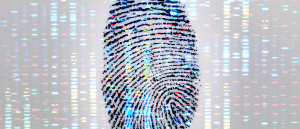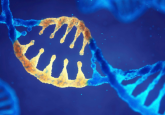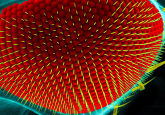Tough pill to swallow: the cellular uptake pathway for large drug molecules

How can we improve drug specificity? Larger, more complex drugs may be the way to target ‘undruggable’ cell targets, but how are these drugs taken up by cells?
Researchers at the University of California San Francisco (UCSF; CA, USA) and the Arc Institute (CA, USA) have uncovered a cellular pathway that allows for the uptake of large drug molecules into target cells. By harnessing this pathway, the researchers expect drug discovery possibilities to expand, changing the way we currently design drugs.
Traditional drug molecules are small and easily taken up by cells; however, these molecules lack the specificity necessary to target key cells, such as kinase enzymes implicated in cancer. By increasing a molecule’s complexity, and therefore specificity, it’s natural to see an increase in a drug compound’s size. This is not common, with only a few drugs succeeding in both stepping outside traditional drug design rules and working effectively intracellularly.
Co-senior author Luke Gilbert (Arc Institute and UCSF) commented, “people have been reluctant to design, synthesize and test such molecules as they are so far beyond standard drug design rules that people just assumed they wouldn’t enter cells.”
However, larger drug molecules composed of linked subunits have greater potential for specificity and seem to be able to get into cells sometimes. The current research team just needed to figure out how.
To do this, they conducted genome-wide functional screens that explore how individual genes affect cellular processes. Using CRISPR machinery with libraries of guide RNAs developed many years ago by Gilbert, the team could decrease (CRISPRi) or increase (CRISPRa) the expression of certain genes, one at a time. By applying these screens to millions of cells, the team could investigate which genetic manipulations produced the desired functional outcome, i.e., which gene manipulations made cells more sensitive or resistant to large, linked drug molecules.
 Introducing FingerDTA: a new drug discovery framework
Introducing FingerDTA: a new drug discovery framework
FingerDTA is a virtual drug discovery framework that could expedite drug discovery and development research by simulating drug–target binding affinity to identify potential new drugs.
They completed these screens in human leukemia cell lines before treating the cells with RapaLink-1, a large, linked anti-cancer drug. The team observed that RapaLink-1 responded differently depending on the genetic manipulation of the cell, indicating that RapaLink-1 is dependent on certain genetic manipulations and their associated pathways.
Interestingly, three genes that promoted RapaLink-1 activity encoded interferon-induced transmembrane (IFITM) proteins, which have not previously been implicated in drug uptake but rather in antiviral defense. Across cell types, upregulation of IFITM expression was associated with increased sensitivity to RapaLink-1, meaning an increased rate of drug entry into cells. However, IFITM expression had no effect on how easily traditional, small drugs could get into cells.
To utilize what they’d discovered about the cellular uptake of large drugs, the researchers then went on to design two large, linked drugs: DasatiLink-1 and BisRoc-1. DasatiLink-1 was composed of two linked known inhibitors of BCL-ABL1, a leukemia protein. Whereas BisRoc-1 was composed of two linked chemotherapy molecules found in rocaglamide.
Both drugs were successful in entering cells and binding to their targets, working just as efficiently as unlinked, smaller molecules. They both also exhibited a reliance on IFITM expression. Furthermore, they found that DasatiLink-1 was more specific for the BCL-ABL1 kinase than its constituent drugs when separate.
The study has illuminated how large and complex drug molecules can enter cells and how the pathway can be enhanced, allowing researchers to exploit the IFITM pathway when developing more complex drugs.
Gilbert commented that the study “enables scientists to think beyond the standard drug design rules and consider whether larger linked molecules may enable targeting proteins in new ways or targeting proteins we obviously thought were untargetable.”





